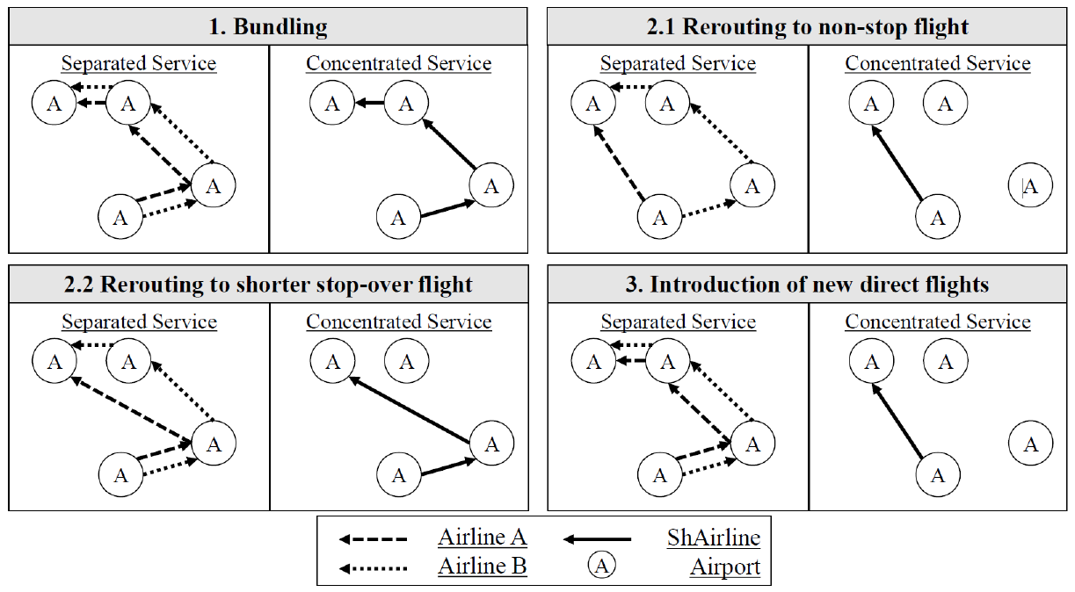
Network, Fleet and Operations
Thomas.Hagspihl[at]bauhaus-luftfahrt.net
+49 89-3074-84952
The NetShAir project addresses the idea of breaking up traditional aircraft ownership and operating relationships and striving for a shared use of aircraft going beyond existing codeshare, wet lease, alliance and joint venture constructs.
The potential of this operational innovation arises mainly from the consolidation of passenger flows that were previously separated into individual airlines and their aircraft. This consolidation may lead to a higher proportion of demand being served by direct connections instead of connections involving transfer(s), so that the flight distance traveled per passenger - and thus the amount of climate-relevant emissions per passenger - can be reduced. In addition, the average seat load factor could increase, with a correspondingly positive impact on the energy balance per passenger.
Consolidating passenger flows to reduce climate-impacting emissions
The NetShAir project aims to quantitatively investigate the potential of cross-airline use of aircraft in terms of reducing climate-relevant emissions. A further objective is to identify the requirements for future aircraft types resulting from the shared use of aircraft and the technology modules suitable for meeting these requirements. In addition, the project will develop business models and legal framework conditions for implementing the idea in practice. Key aviation stakeholders (manufacturers, leasing and airline companies, airports, air traffic control experts and legislators, and passengers) will be involved in the project in a participatory manner over the entire duration of the project, particularly through workshops.
Bauhaus Luftfahrt is coordinationg the project and
- defines boundary conditions, reference and deployment scenarios of aircraft sharing concepts,
- determines the requirements for future aircraft types resulting from the implementation of the concept,
- and quantifies the potential for reducing emissions using operations research methods and real data.

The underlying project was funded by the Federal Ministry for Economic Affairs
and Climate Action under the funding code 20E2123A.


